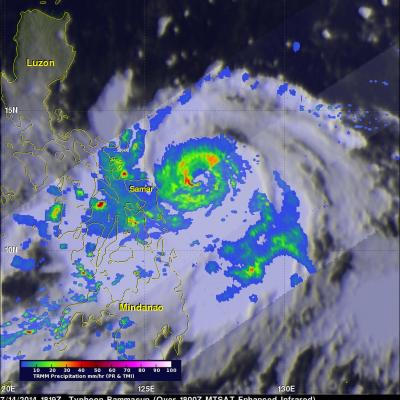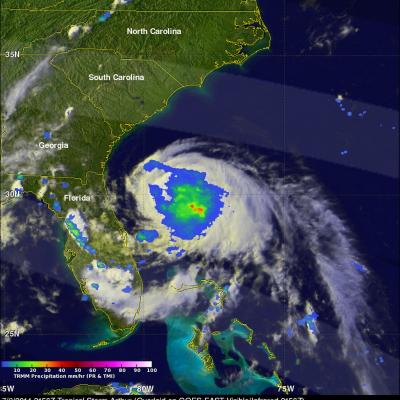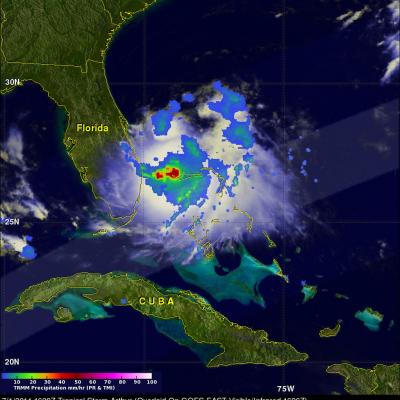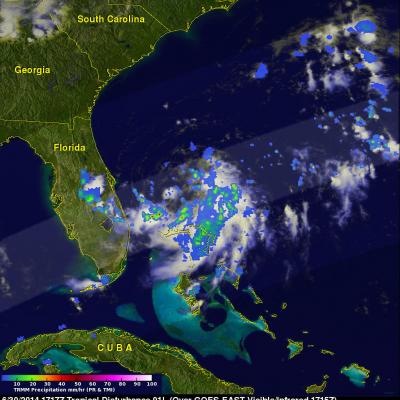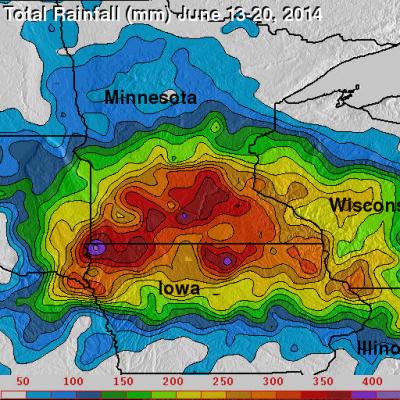Deadly Typhoon Rammasun Crosses The Phillipines
Typhoon Rammasun known locally as "Glenda" is the most powerful typhoon to hit the Philippines this year. As of today, Ten deaths have been attributed to Rammasun. Flooding and landslides are expected due to heavy rainfall. Typhoon Rammasun's track was north of Super Typhoon Haiyan's path of destruction through the Philippines in November 2013. The image above is a preliminary analysis of rainfall during the period when typhoon Rammasun was moving over the Philippines. Typhoon Rammasun's track is shown in red. This analysis is the result of a TRMM-calibrated merged global Multi-satellite



